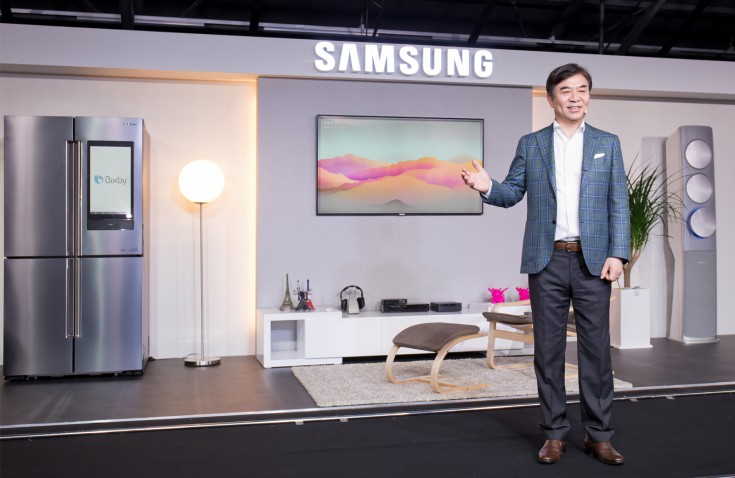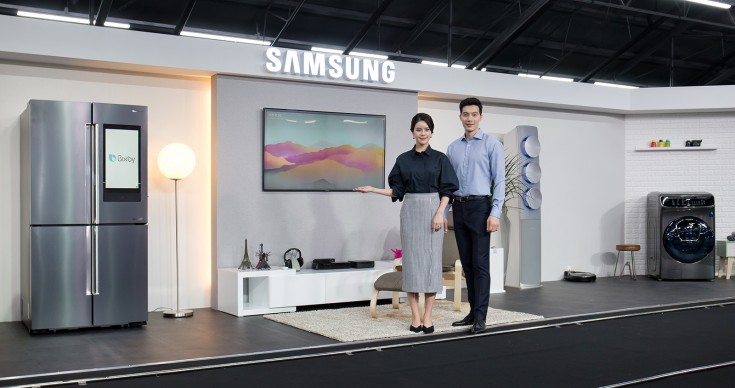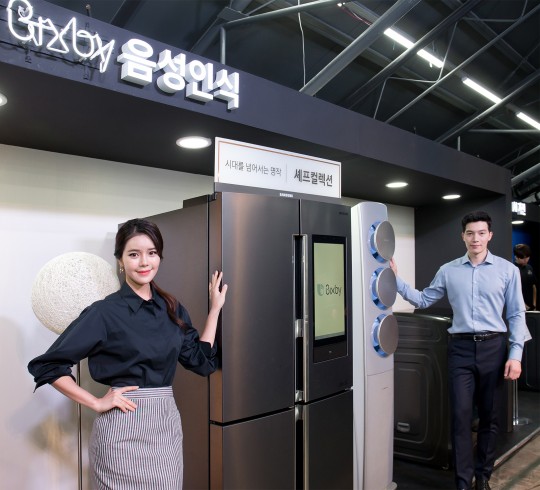
At a ‘Samsung home IoT & Bixby’ media day held in downtown Seoul, Kim Hyun Seok, president and head of consumer electronics division at Samsung Electronics, said, “Today’s IoT applications aren’t smart enough to offer natural language UI-based two-way, interactive, customized services, just staying connected with each other to be remotely controlled. We are now trying to combine our cloud-based IoT platform with natural language voice-activated AI Bixby UI to demonstrate what smart IoT home platform should look and act like.”
At the heart of the Samsung’s smart home IoT technology are SmartThings cloud IoT platform and Bixby AI solution.
Samsung had already built all IoT-related cloud services around the SmartThings platform in 2017 launch a seamless smart home IoT service.
Starting from 2018, Samsung is widely promoting SmartThings app as a hub to connect all Samsung IoT home appliances and devices to allow users to simply, intuitively control them in the fold using its Bixby AI technology.
On the way toward that goal, Samsung is embedding its voice-activated AI-assistant Bixby into a whole range of its mobile and consumer product line-up, including TVs, air conditioner, washing machine and refrigerator, microwave ovens, robot vacuum cleaner, and so on.
It also plans to introduce SmartThings hub in the second-half of the year not only to help connect Samsung’s IoT devices with each other, but also connect and link even home lightings and sensors as well as 3rd party products supporting Wi-fi, ZigBee, and Z-wave short-range wireless communications technology.
The wide availability of communications technology will help consumer to use diverse IoT and smart devices, ensuring interoperability among tem.
Meanwhile, Samsung is aggressively strengthening key technologies for next generation AI including language, vision, data, and so on. To do so, it is aggressively scouring partners to merge and acquire, or make strategic alliance with other tech companies and research institutes.
Here are demonstrations of how Samsung’s SmartThings cloud, app and hub will work together with its home appliance, TVs, mobile devices as well as third party devices not only to remotely control them, but also analyze users’ usage pattern and neighboring conditions to offer customized services and unified, in-between control of each device.

Eye-popping services were Bixby AI-based interactive services that turn on and off and control various home appliances and smart devices with a command of voice.
For example, consumers come back home and say, "Hi, Bixby. I'm home.". Then, devices like air conditioners, air purifiers and lights, robot cleaners suddenly comes roaring on to get ready to work, and robot cleaners toddle back on its charging station. The vice versa is true, as just speaking "Good night" will put air conditioners and air purifiers on a sleep mode, and turn off TVs.
When it comes to its FamilyHub refrigerator, users archive a list of stored foods to make sure whether their viability expires or not just with a command of voice. The FamilyHub refrigerator also can identify each of family members just by their voice and then individually alert of their daily schedules. User can also watch movies or sports games on the refrigerator’s built-in TV screen, which they favor, while cooking.
Applications don’t stop there. Juts speaking “It’s very hot” can allow users to activate and control its windless air conditioners, as the air conditioner factors in their routine, daily usage patterns to set themselves at the most optimal service mode for the day’s temperature and humidity. It also recommends the most optimal way to save energy bills.
Its “Flex Wash” washing machine also recommends the most optimal washing mode analyzing the very nature of the fabric, and suggests a guideline on available washing modes and options.
Also available is a voice-activated service on what goes wrong and how to fix it when it goes default.
Speaking into its QLED TV enables users to turn on and off it, and control all SmartThings Cloud-based home appliances and smart devices and search Internet, or other devices for information on demand. For example, the service allows them to search Internet for spaghetti recipe, and enables them to identify what’s inside in the FamilyHub refrigerator.
Voice-activated favorite TV and movie programs suggestion service is also available, as the built-in Bixby AI can analyze users’ TV viewing patterns. The Bixby is also smart enough to the most optimal picture quality to watch by analyzing program and contents genre –whether they are thrillers, action films, or romances, or sports game.


